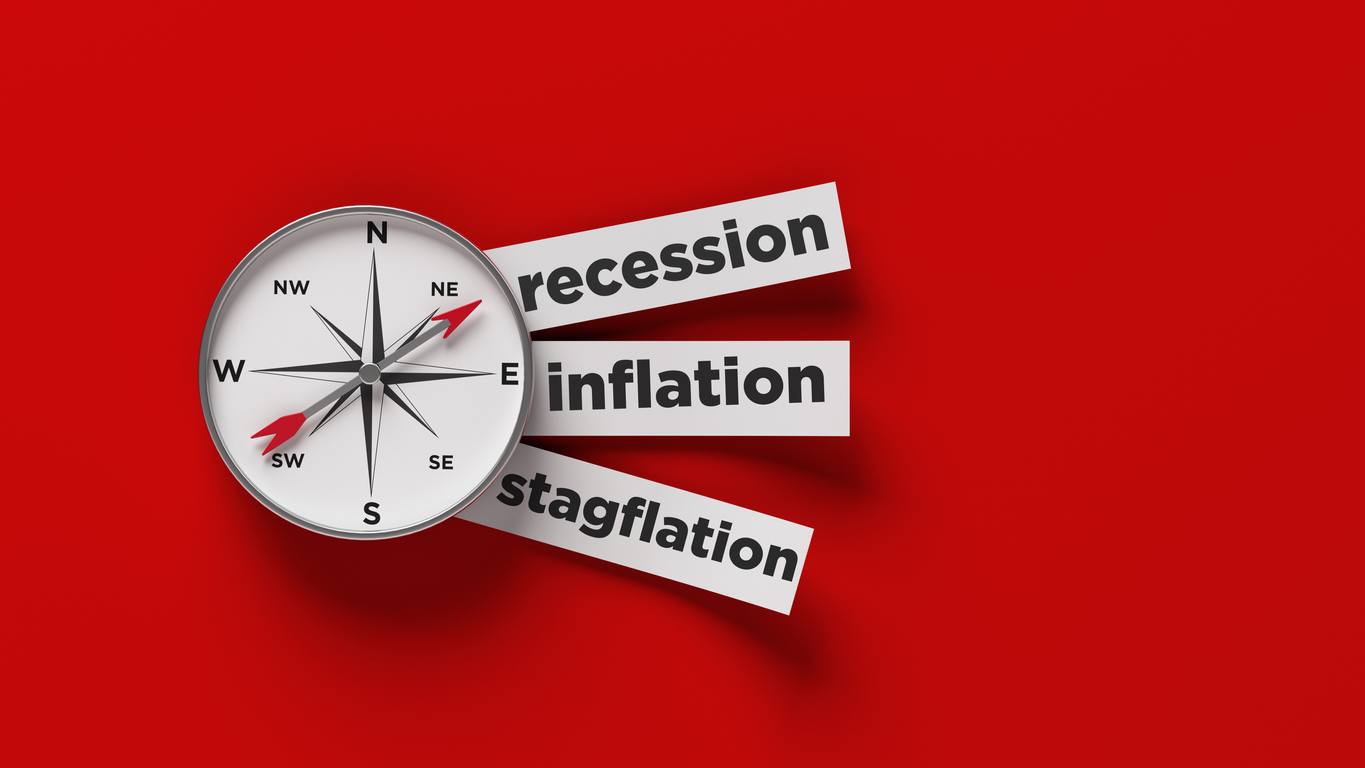Stagflation is when three significant rates – high inflation, high unemployment and stagnant economic growth – are present at one time. Hence the portmanteau of stagnation + inflation.
It’s unusual for these three states to occur simultaneously and the impact on investment performance can be profound.
If in the U.K. we are heading into a period of stagflation like the one experienced during the 1970s oil crisis, an understanding of what causes stagflation can help to guide your investment strategy and help you choose assets that can help to protect you as much as possible against negative impacts.
What Causes Stagflation?
Typically, inflation and economic growth have a positive correlation.
In periods of stagflation, this correlation is negative – which is caused by several factors.
Supply Shocks
One of the primary culprits is a very sudden disruption in the supply of a crucial commodity, often oil.
Sudden spikes in oil prices push costs up for businesses and consumers, but don’t increase economic growth. For instance, we can see this in action during the period of stagflation that the U.K. experienced in the 1970s as the result of the oil crisis.
The wolrd spent the early 2020s managing an energy crisis, impacted by supply issues resulting from Covid-19 and the war in Ukraine.
In April, members of the Opec+ cartel surprised everyone by announcing that they were cutting production from May, reducing the supply od crude oil by more than one million barrels a day. This caused a spike in oil prices, and has had a knock effect on the wider economy.
Government’s Poor Economic Decision-Making
Government fiscal policy can contribute to stagflation in a few ways, normally either through excessive government spending, or keeping interest rates too low.
Looking at the situation in the U.K., many would argue that although independent, the Bank of England fell under pressure to resist increasing rates to combat soaring inflation, and that its slow response trapped us in stagflation.
Stagflation vs Inflation vs Deflation: What are the differences?
The difference between inflation, deflation, and stagflation is very simple to understand.
Inflation and deflation both refer only to changes in the retail price index (RPI).
If prices are going up, the value of money is falling: each pound buys less than before – this is inflation.
On the contrary, if prices are falling, each pound has more purchasing power – this is known for deflation.
Stagflation is a unique economic situation where inflation is only one of three contributing factors. There are also high levels of unemployment and low or stagnant economic growth to contend with.
Which Assets Perform Best in Stagflation?
Certain types of stocks and bonds are believed to perform better during stagflation, and can help to protect you against its worst effects.
Here are a few examples of asset classes with the potential to perform well in stagflation, but note that you must always carry out careful research and planning before taking any action.
Defensive stocks: Companies making essentials like electricity, pharmaceuticals, and basic food and hygiene products tend to fare better than others during stagflation. These are the products that are hard for people to cut back on, even during tough economic times.
Commodity-related stocks: Companies involved in producing or supplying commodities that are likely to stay in high demand despite inflation can perform well. This includes the energy sector and precious metals, like gold and silver.
Infrastucture stocks: If the government decides to invest in infrastructure projects as a way to boost jobs and stimulate growth, then companies involved in construction can benefit.
Treasury Inflation-Protected Securities (TIPS): Specifically designed to protect against inflation, their principal value adjusts with it. The idea is that investors won’t lose purchasing power.
Global bonds: Diversifying your bond portfolio with bonds from different countries is a strategy whose goal is to minimise the impact of stagflation in one particular economic area.
Remember, there are no guarantees in the financial markets.
Economic conditions can be complex and unpredictable, and the performance of specific stocks and bonds will depend on more than just inflation and GDP.
It is advised to do your research and talk to a financial professional before making any investment decision.
Trading Through Stagflation
Trading during stagflation is complex, as it’s not a common economic scenario. You won’t have years of data to base decisions on, and markets can often be unpredictable.
Here are four strategies to consider:
Diversification: When the economy is experiencing this miserable mix of high inflation and low growth, it’s more important than ever to spread your activity across different asset classes to mitigate risks. This theory can apply to currency trading too – spreading your currency exposure across assets denominated in more stable currencies can often be a sensible trading strategy.
Hedging: You may choose to use options and futures during stagflation to hedge against potential losses. You still have the opportunity to profit from price movements, but you get the extra built-in protection too.
Short positions: While no one likes the idea of profiting from someone else’s decline, plenty of industries will struggle during stagflation, and many investors will short those stocks.
Long-term investments: Getting through a period of stagflation can simply be about weathering the storm. Solid long-term investments such as dividend-paying stocks, can be a way to get through short-term economic turmoil.
Trading during stagflation isn’t easy. As a matter of fact, it will test your knowledge and expertise to the limits, and the fact that it’s such a rare phenomenon means you’ll have less historical trend data to inform your decisions.
By understanding the causes of stagflation though, and how different asset types tend to react to it, you should be in a stronger position to navigate this challenging financial landscape.
This material is for general information purposes only and is not intended as (and should not be considered to be) financial, investment or other advice on which reliance should be placed. INFINOX is not authorised to provide investment advice. No opinion given in the material constitutes a recommendation by INFINOX or the author that any particular investment, security, transaction or investment strategy is suitable for any specific person.
All trading carries risk.
















